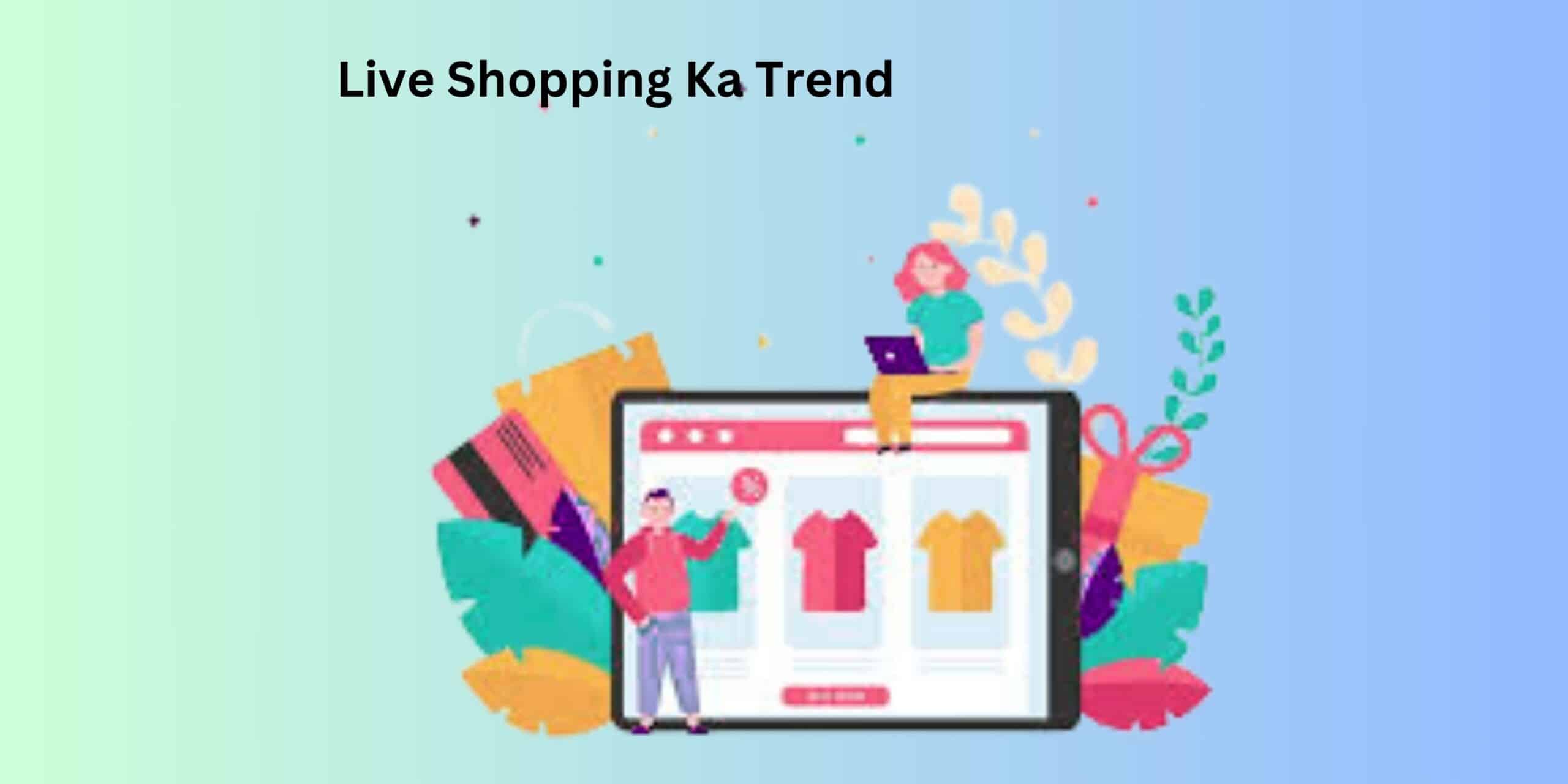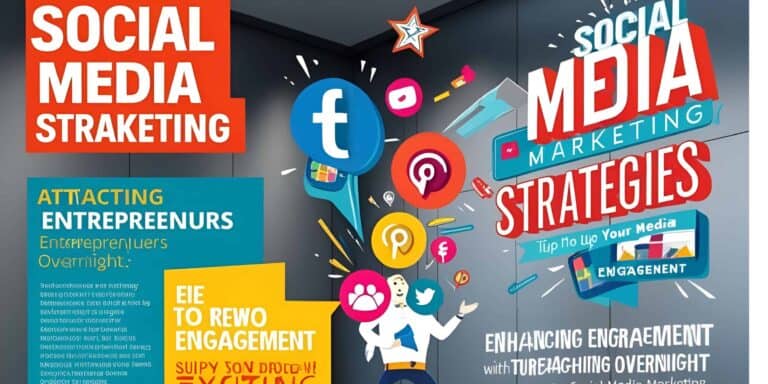Live Shopping Trend: The New World of E-Commerce in India!
Live Shopping: In today’s digital era, shopping experience is no longer a static process. Now live shopping has given a new direction to e-commerce. This is a trend where sellers and influencers demonstrate products in real-time, interact live with buyers, and create an engaging shopping experience. In this article, we will discuss in detail the concept of live shopping, its benefits, challenges, case studies, future trends, FAQs and conclusion. Let’s start!

The Concept of Live Shopping – A New Digital Experience
Live shopping is essentially a digital event where sellers or influencers showcase products through live streams. It’s similar to TV shopping channels, but everything happens on your mobile, laptop, or tablet. As the host demonstrates the product, explaining its features and benefits, the audience can ask questions via live comments. This interactive process gives buyers a personal touch, making them feel as if they’re physically in a store.
Read more:
Unlike traditional online shopping, where you rely on images and descriptions, live shopping involves practical product demonstrations. This provides buyers with a real-time understanding of the product’s quality, usability, and performance, simplifying their decision-making process by eliminating confusion.
Key Elements of Live Shopping
- Real-Time Interaction: The biggest advantage is instant communication. If you have doubts about a product’s features, you can comment and get immediate answers, fostering a strong personal connection and building trust.
- Visual Demonstrations: Seeing products used in real-life scenarios helps buyers understand them better. Unlike static photos or text reviews, live demonstrations clarify all features.
- Limited Time Offers: Many live shopping events feature time-bound offers or discounts, creating urgency and incentivizing quick purchases, which boosts sales.
- Personalized Experience: Hosts share personal experiences, highlighting the product’s real-world performance. This authenticity attracts buyers and increases engagement.
Detailed Explanation
Technology is crucial in live shopping. With fast internet and high-definition video streaming, live events rarely face buffering or technical issues. Sellers showcase everything about their products—size, usability, design, and even defects (if any)—with transparency, instilling confidence in buyers.
Another benefit is continuous host-audience interaction. If a viewer raises a concern or compliment in real-time, the host acknowledges it immediately, creating two-way communication absent in conventional shopping. This makes buyers feel valued, enhancing their overall experience.
Live shopping enables both small and large sellers to reach a wider audience easily. It’s particularly beneficial for small businesses, offering effective marketing on a limited budget. In today’s competitive market, where digital transformation is essential, live shopping has become an innovative tool.
Benefits and Challenges of Live Shopping – A Detailed Analysis
Live shopping offers numerous benefits but also comes with challenges. Let’s explore both aspects in separate sections.
Benefits
- Interactive Engagement: The interactive nature is a key advantage. During a live stream, you can directly engage with the host, gaining detailed product information. If you have doubts about a specific feature, you can ask instantly, and the host responds, clarifying decisions and boosting purchase confidence.
- Real-Time Demonstration: Unlike static images or reviews in traditional online shopping, live shopping shows products in use—be it a gadget or beauty product. This provides a clear idea of functionality, design, and durability, strengthening purchase decisions.
- Sales Boost Through Limited Offers: Many events feature limited-time offers or discounts, creating urgency and prompting immediate purchases. For example, fashion brands conducting flash sales during live events have seen exponential order increases, directly boosting sales.
- Trust and Transparency: Hosts sharing personal experiences create an authentic, trustworthy impression. Honest, detailed reviews build buyer trust, unlike traditional e-commerce reviews.
- Advantage for Small Businesses: Live shopping allows small businesses to reach wider audiences on a low budget, making it an ideal platform for effective marketing with creative product showcases.
Challenges
- Technical Issues: The biggest challenge is technical glitches. Slow internet or low streaming quality can cause buyers to lose interest. Buffering or sound issues during sessions can also reduce engagement, requiring hosts to maintain reliable technical setups.
- Market Saturation: As live shopping gains popularity, competition increases. With many sellers hosting events, buyers may struggle to differentiate them. Unique presentations and creative content are essential to stand out.
- Risk of Misinformation: Transparency is vital, but hosts sometimes make exaggerated claims or provide inaccurate information. This can lead to customer issues, hurting trust and brand reputation.
- Managing Negative Feedback: Addressing product issues or complaints during a live session can be challenging. Mishandling negative feedback can adversely affect brand image, so hosts must have plans to manage grievances.
- High Expectations: Buyers today have high expectations. Live shopping events must deliver a flawless experience to satisfy viewers. Any technical or content-related glitches can lead to immediate disappointment, impacting future sessions.
Detailed Explanation
Balancing live shopping’s benefits and challenges is crucial for effective business strategies. Interactive engagement clears doubts and strengthens purchase decisions, while limited offers and flash sales drive immediate sales. However, unmanaged technical issues, market saturation, or misinformation risks can negatively impact the experience.
Hosts and brands must focus on continuous innovation, reliable technology, and a customer-centric approach to ensure engaging, error-free events. Incorporating audience feedback can improve future sessions. This makes live shopping a dynamic, evolving platform where innovation and creativity drive achievable business growth.
Real-Life Examples & Case Studies – Learning from Success Stories
Real-life examples and case studies of live shopping offer valuable lessons. Many established brands and startups have made live shopping an integral part of their marketing strategy, achieving growth in brand value and sales.
Case Study 1: Fashion Influencer’s Magic
A popular fashion influencer hosted a live shopping event, showcasing a new collection with detailed explanations of each outfit’s fabric quality and fit. Limited-period discount offers created urgency. The result? A 150% jump in orders in a single session. This example shows that a host’s personal touch and honest presentation build trust and exponentially increase sales.
Case Study 2: Electronics Brand’s Flash Sale
A well-known electronics brand hosted a flash sale event, demonstrating the latest gadgets live. Technical experts provided in-depth explanations of features, compatibility, and performance, answering buyer questions instantly. Limited-period offers motivated purchases, leading to a remarkable sales increase. This case study highlights how effectively showcasing technical details boosts buyer confidence and engagement.
Case Study 3: Beauty Product Launch’s New Approach
A beauty brand launched a new makeup line through a live shopping event, where popular influencers demonstrated the products in their daily routines. They detailed texture, longevity, and suitability, addressing audience questions about skin types and concerns. The event ended with a significant order increase. This case study shows that presenting products with authenticity and transparency builds trust and loyalty.
Detailed Explanation
These examples demonstrate that live shopping success isn’t limited to technology or discounts. It’s a holistic approach where the host’s personal touch, audience engagement, and product demonstrations play key roles. Each case study utilized strengths—detailed explanations, effective communication, or limited offers. They also highlight that continuous monitoring and customer feedback integration can improve live shopping events.
Live shopping is not just a sales channel but a complete digital experience prioritizing audience needs and preferences. Unlike traditional marketing, it offers endless scope for innovation and creativity.
Future of Live Shopping in India – A Vision for Tomorrow
Live shopping is rapidly growing in India, and experts believe it will see further innovation in the future. As part of digital transformation, live shopping is continuously evolving, and its current benefits and challenges provide insight into future opportunities.
Future Trends & Innovations
- Augmented Reality (AR) and Virtual Reality (VR): Advanced technology will enable AR and VR integration in live shopping. Imagine virtually trying products, viewing 360-degree perspectives, and exploring features in detail on your screen, making shopping more immersive.
- Personalized Experience Through Data Analytics: Brands will use advanced analytics to track viewer behavior and preferences, offering personalized recommendations and deals tailored to individual needs, enhancing engagement for loyal customers.
- Enhanced Influencer Collaborations: Influencers’ roles will become more critical, with authentic reviews boosting product credibility. Brands and influencers will host exclusive live events, increasing trust and engagement.
- Seamless Integration with Social Commerce: Social media platforms like Instagram, Facebook, and YouTube already offer live streaming. Future integrations with shopping carts and payment gateways will provide a seamless end-to-end shopping experience.
Detailed Explanation
Live shopping is not just a trend but the future of e-commerce. As buyers’ habits evolve, they seek convenience, personalization, and immediate satisfaction—qualities live shopping delivers.
In the future, advanced features like real-time translation tools will make product details accessible to regional language audiences, enhancing inclusivity and brand loyalty. Brands will use creative content strategies—storytelling, interactive quizzes, and instant giveaways—to maintain audience interest. These approaches will make live shopping a dynamic platform where each session offers a new experience.
Overall, live shopping’s future is promising, complementing traditional e-commerce and creating a digital shopping revolution. Brands must adopt flexibility, leverage technology, and maintain a customer-centric approach to keep pace with this evolving trend.
FAQs – Important Questions About Live Shopping
Q1: What is live shopping?
Live shopping is a digital experience where sellers and influencers demonstrate products in real-time, answer viewer questions, and create an interactive shopping experience with instant feedback.
Q2: Why is live shopping so popular in India?
Increased digital penetration, smartphone usage, and convenience drive its popularity. Real-time interaction, exclusive discounts, and influencer trust make it a preferred format.
Q3: What are the benefits of live shopping?
It boosts engagement, trust, and immediate sales through interactive demonstrations, instant query resolution, and exclusive offers, differing from traditional e-commerce’s static approach.
Q4: Are there risks or challenges in live shopping?
Yes, challenges include technical glitches, connectivity issues, and market saturation. Exaggerated claims or misinformation can also negatively impact trust.
Q5: What is the future scope of live shopping?
The future includes AR/VR integration, personalized analytics, and advanced influencer marketing, complementing traditional shopping models and providing sustainable growth.
Conclusion – A New Chapter in the Digital World
Live shopping is not just a trend but a revolutionary shift in e-commerce, promoting direct, genuine interaction between sellers and buyers. In India, with digital transformation, live shopping has taken a new direction, blending convenience, personalization, and innovation.
This article explored the concept, its rise in India, benefits, challenges, and future scope. Real-life examples and case studies demonstrated its effectiveness as a marketing tool. For those aiming to elevate their business, live shopping offers a medium to establish authentic audience connections.
As competition grows, adopting live shopping with innovative strategies can set your brand apart. Embrace this dynamic platform to unlock new opportunities and drive sustainable growth. Happy selling and welcome to the future of e-commerce!







